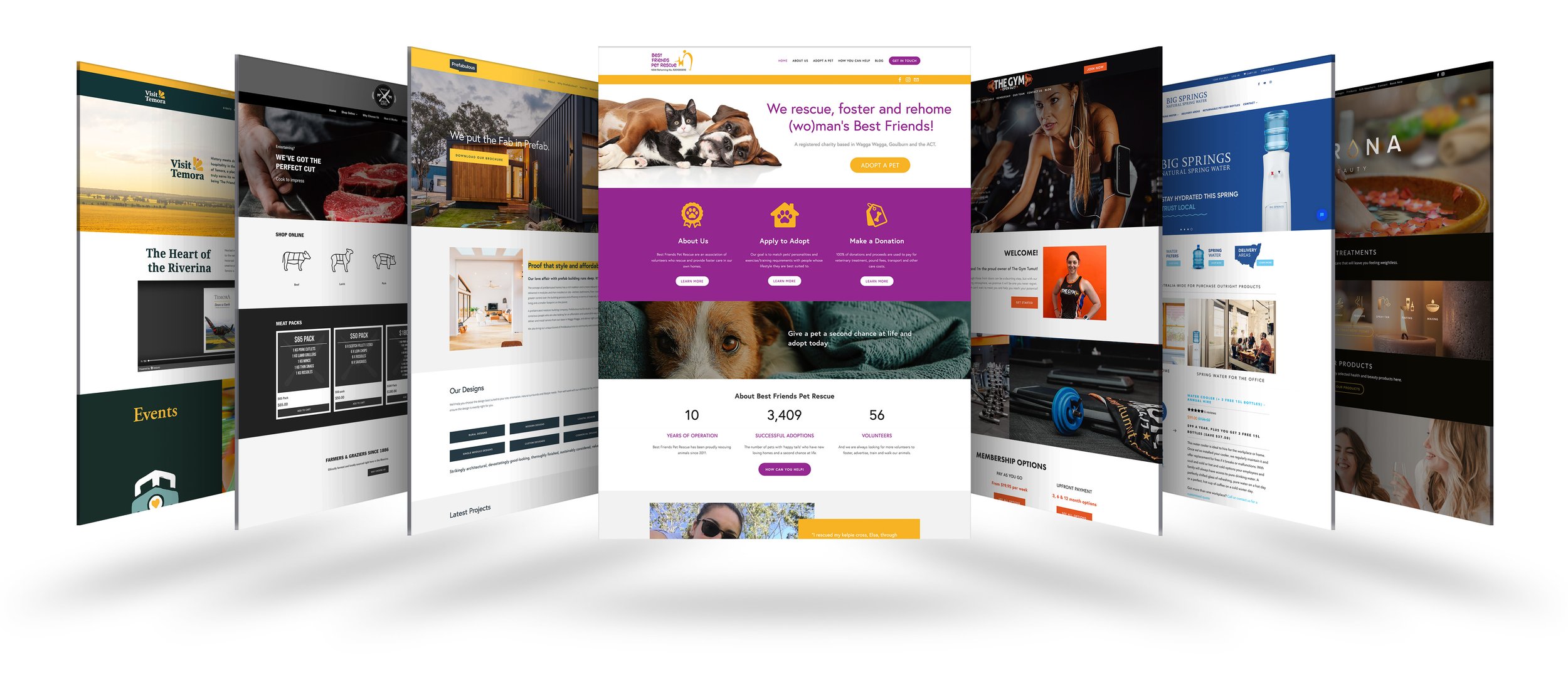Leading Tips for Producing an Impactful Site Layout That Transforms
To achieve this, one have to consider a selection of factors, consisting of recognizing the target audience, prioritizing user experience, and maximizing for mobile platforms. The strategic usage of compelling call-to-actions and a well-defined visual hierarchy plays a vital duty in guiding users through their trip.

Understand Your Target Target Market
Understanding your target market is basic to efficient site layout, as it lays the foundation for producing an interesting user experience. Identifying who your users are, including their demographics, choices, and habits, enables developers to customize the website's web content, design, and performance to meet specific needs.
Carrying out comprehensive market research study is vital in this procedure. Surveys, interviews, and analytics can provide useful insights right into individual assumptions and pain factors. By assembling this data, developers can develop customer characters that stand for various segments of the target market, making certain that layout choices are informed and appropriate.
Additionally, understanding the target audience assists in picking proper style components such as color design, typography, and images that reverberate with customers. A website that talks directly to its target market fosters a sense of connection and trust fund, urging longer visits and higher conversion prices.
Inevitably, a user-centered approach to web site layout not only boosts user complete satisfaction but likewise supports organization goals by driving involvement and loyalty. By focusing on the demands and preferences of the target audience, a site can efficiently offer its function and attain wanted end results.
Prioritize Customer Experience
To enhance the general effectiveness of an internet site, prioritizing individual experience (UX) is important (Website Design). A well-designed UX makes sure that site visitors can navigate the website easily, find details rapidly, and involve with material meaningfully. This leads to boosted user satisfaction and higher conversion prices
Begin by executing user-friendly navigating. Menus should be rationally structured, permitting users to find vital locations of the website with minimal initiative. Consistency in style components, such as shade plans and fonts, fosters knowledge, which is critical for maintaining individual engagement.
Additionally, consider the filling speed of your internet site. A hold-up of simply a few secs can result in substantial drop-offs, as users are less most likely to wait on a slow-loading page. Enhancing images and maximizing code can improve efficiency and preserve visitors.
Additionally, clarity in content presentation is essential. Use concise, appealing language and separate message with visuals to enhance readability. By prioritizing customer experience, you not only produce a more pleasurable setting for site visitors but likewise strengthen your brand's trustworthiness. Eventually, a concentrate on UX is a financial investment in the long-term success of your site.
Optimize for Mobile Devices
Enhancing for mobile phones is crucial in today's electronic landscape, where a boosting variety of customers accessibility web sites with smart devices and tablets. A Full Article mobile-friendly style not just enhances customer experience yet likewise plays a considerable function in boosting online search engine rankings. To attain this, it is important to adopt a receptive layout that instantly gets used to various display dimensions and positionings.

Loading speed is one more vital element; mobile customers are usually much less individual and anticipate quick access to info. Maximize photos and take advantage of browser caching to enhance performance. Finally, examination your website on numerous tools and display resolutions to determine and rectify any possible use problems. By focusing on mobile optimization, you ensure that your site continues to be competitive and efficiently involves a more comprehensive audience.
Usage Engaging Call-to-Actions
A site's performance often hinges on its capacity to guide site visitors toward desired activities, making compelling call-to-actions (CTAs) crucial elements of style. CTAs serve as the critical factors that route customers to engage with the website, whether that suggests buying, enrolling in an e-newsletter, or downloading and install a source.
To develop effective CTAs, clarity is critical. Use succinct language that plainly connects the action you desire the customer to take. Phrases such as "Begin," "Sign Up Free," or "Store Now" not just communicate necessity however also remove uncertainty. The placement of CTAs is just as essential; they should be purposefully positioned throughout the webpage to guarantee they are conveniently visible, particularly in high-traffic areas.
Additionally, the layout of CTAs ought to stick out without being obtrusive. Utilize contrasting shades and clear typefaces to guarantee they anchor capture interest. In addition, consider utilizing directional cues, such as arrowheads or images, to direct individuals towards these switches. By concentrating on these elements, organizations can dramatically improve customer involvement, driving conversions and eventually accomplishing their web site's goals.
Emphasis on Visual Pecking Order
Efficient web site design relies greatly on a well-structured visual power structure that guides individuals through web content perfectly. By organizing aspects in a fashion that focuses on info, designers can improve individual experience and promote decision-making. This includes making use of size, shade, contrast, and spacing purposefully to accentuate one of the most critical elements of a page.
The use of bigger fonts for headings and subheadings develops a clear distinction in between various sections, enabling individuals to scan content effortlessly. Additionally, utilizing different shades for switches and calls-to-action can capture individual focus and encourage communication. Whitespace is one more necessary part; it avoids clutter and allows individuals to concentrate on vital messages without disturbances.
Photos and graphics need to complement the text while additionally adhering to the established pecking order, strengthening the overall message (Website Design). Consistency in design elements, such as shade plans and typography, more reinforces the visual power structure, making navigating user-friendly

Conclusion
In conclusion, reliable web site design requires a comprehensive understanding of the target audience, prioritization of user experience, and mobile optimization. Inevitably, a well-executed site design serves as a critical element in driving user activities and attaining service objectives.